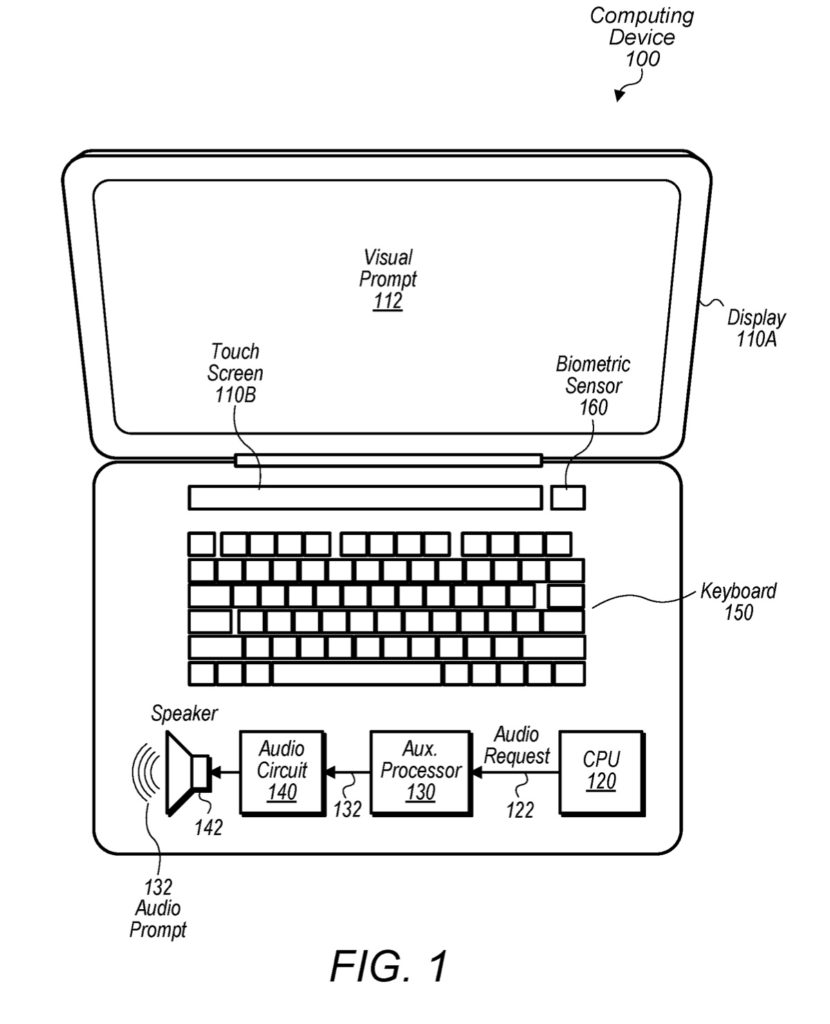Apple has been granted a patent (number 11,200,303) for “audio accessibility assistance” with safety features for assisting visually impaired users of Macs and iPads.
About the patent
Most of us are lucky enough to be able to easily use our various electronic gadgets. However, for someone who is visually impaired, however, interacting with a computing device can prove to be more difficult as it may impossible to read information presented on a traditional visual display. As a result, various techniques have been developed to assist visually impaired users.
For example, a computing device may include a refreshable braille display capable of providing tactile feedback to the user. A computing device may also provide information to the user via audio.
Apple wants to take this to another level. The patent involves techniques for providing audio prompts to visually impaired users. In one embodiment, a Mac or iPad includes a display, an audio circuit coupled to a speaker, first and second processors, and memory. Certain audio prompts would play via the speaker.
Additionally, the Mac or iPad could include a refreshable braille display capable of providing tactile feedback to the user.
Safety details
However, Apple wants to add safety features to such a system. Because a visually-impaired user may be unable to view the content depicted on a display, a visually-impaired user may be more susceptible to being deceived by a “malicious actor” controlling a computing device. For example, a visually-impaired user may believe that he or she has navigated to a merchant’s website to make a purchase.
A malicious actor, however, may have redirected the user’s browser to an alternative website attempting to collect the user’s payment information. While a user capable of seeing the display might detect something is wrong, a visually-impaired user may be unable to do so. What’s more, if the visually-impaired user relies on audio prompts to indicate what is being displayed in the user’s browser, a malicious actor may attempt to exploit these prompts by, for example, playing an audio prompt to indicate that the user is visiting a merchant’s web site when the user, in fact, is visiting a malicious website.
Apple’s idea is for an additional, separate processor to be employed to control access to an audio circuit (e.g., a sound card) of a computing device. A central processing unit on the Mac or iPad would execute the software.
Instead of allowing the first processor to directly interact with the device’s audio circuit, the second processor would, as mentioned, control access to the audio circuit. The first processor makes requests to the second processor to play audio content via the audio circuit such as an audio prompt corresponding to the visual prompt being displayed.
The second processor may employ one or more techniques to verify the integrity of requests received from the first processor. It could also control access to the display and be aware of what is being presented on the display.
What’s more, the second processor could also execute a second, separate operating system from the operating system executing on the first processor in order if the operating system executing on the first processor becomes compromised or corrupted.
FIG. 1 is a diagram illustrating an example of a computing device configured to provide audio prompts via an audio circuit controlled by an auxiliary processor.
Article provided with permission from AppleWorld.Today

